An interview with Yasuhiro Naito and director Kenji Muto about the anime ``TRIGUN STAMPEDE'', saying that ``Trigun'' is ``boosted, refined, concentrated, and not returned.''

The animation '
Anime 'TRIGUN STAMPEDE'
https://trigun-anime.com/
Along with the excitement, the following climax visuals have been released.
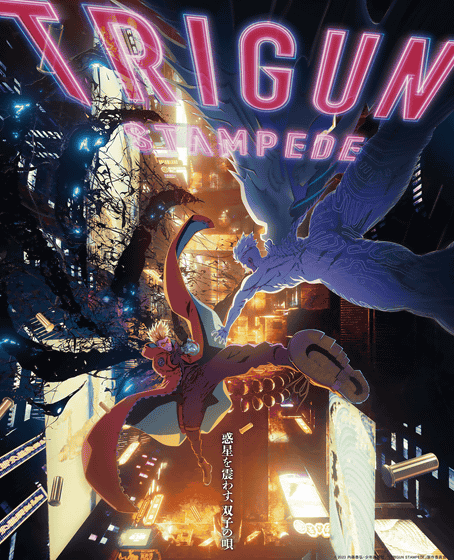
GIGAZINE (hereinafter G):
Thank you for your time today. Mr. Naito has received a lot of interviews, including the internet, and it's so fulfilling that I don't think I'll hear anything new anymore, so this time I'm like, 'What a corner of a jubako.' Please understand that there may be some questions.
Original author, Yasuhiro Naito (hereinafter referred to as Naito):
Yes, thank you very much.
G:
And about Director Muto, I couldn't find an interview after searching a lot, so I think I'll ask him some basic questions such as his career.
Naito:
Isn't there?
Director Kenji Muto (hereinafter referred to as Muto):
I think it's the first time I've ever had an interview for an internet article like this.
G:
I'm glad it wasn't actually listed somewhere and I couldn't find it. Thank you very much. First of all, I would like to ask
Naito:
'Manga power' is, in short, 'the power to keep creating interesting things in a stable manner.' I wanted to become a person who can draw more complete and interesting things without difficulty, and I still want to.
G:
I read 'Trigun' when it was serialized, and thought it was a stable and interesting work.
Naito:
That was already a life-or-death struggle with the work. I had a strong impression that I was struggling at the last minute to see if I could control the story. Obsessive thoughts also attacked ... .... It feels like it was rushing in at once, so I don't feel like I was able to control it.
G:
Why did such thoughts come to attack you?
Naito:
After all, the serialization I did for 12 years was all my life during that time. If it turns out to be 'the worst final episode', I'm afraid that the work itself will feel like it's been a failure for 12 years. I think this is what many writers think.
G:
Well, I've heard similar stories from other people. What kind of pressure was born when you were drawing?
Naito:
How was it ... I don't remember the details, but in about 6 volumes I thought, 'Okay, let's start running towards the end', and it took 14 volumes from there. Once, at the end of Wolfwood, I had the feeling that ``I can't afford to screw up here. I can't.
G:
It's was so……. In the same interview, Mr. Naito said about when he started digital drawing, 'From the end of 'Trigun Maximum'. The coloring is older and almost everything except the first few pages of the first episode of Trigun.' He was there.
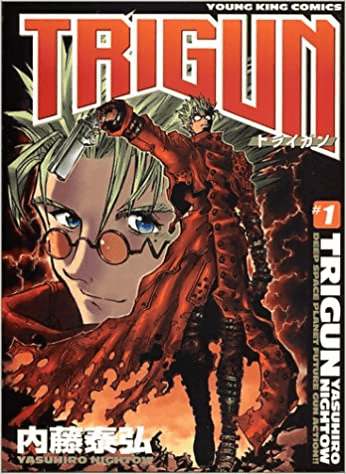
G:
Since the first Mac was '
Naito:
'Because it became an environment where I can do it' was. At the time, I wanted to use a Mac, but the environment gradually improved and I was able to output digitally. So... I think it was purely fun, coloring on a Mac (laughs). Still, as for line drawings, I was still in a state where I could not draw pen lines on a PC. The software wasn't finished that far.
G:
Ah, I see.
Naito:
So, in the beginning, the line art was in the form of scanning the analog drawing and coloring it. Even black and white can be used for computer monitor screens. After that, software that could reproduce the handwriting of a pen with high precision came out, and I thought, ``This can be used for the main part of the manga. But I think it was really strange that the Trigun serialization was going to end in one or two episodes (laughs).
G:
Amazing (laughs)
Naito:
I think I should draw it to the end and then take it slow (laughs), but it got really interesting, so I did it.
G:
What kind of environment are you drawing in now?
Naito:
I used to use a software called CLIP STUDIO , and moved to Windows. All the assistants are not remote yet, so they are coming to the workplace, but we have prepared PCs for the number of people.
G:
Do you build your own PC?
Naito:
No, no, no (lol), at the BTO shop, I'm introducing a board with strong graphics while consulting with the staff who are familiar with it. I've never built one myself.
G:
Next is Director Muto. According to the design information site [JDN], in an interview related to ' Houseki no Kuni ', Producer Waki of Orange said, 'Mr. I have experience as a manga artist's assistant, and I have a background in short films such as MVs and commercials, and have been working on commercial animation for the past five years .' This is about Director Muto, right?
Muto:
that's right. Well, I didn't know that kind of information at all (laughs). I went to the direction, but Masao Maruyama , who was a producer of Madhouse at that time (currently MAPPA Chairman and CEO of Studio M2), asked me to make a debut in commercial animation.
Mr. Masao Maruyama is listening to the story in detail in the following interview.
``Anime version of Garo is the work I wanted to do the most in my 50-year animation life'', interview with Masao Maruyama-GIGAZINE
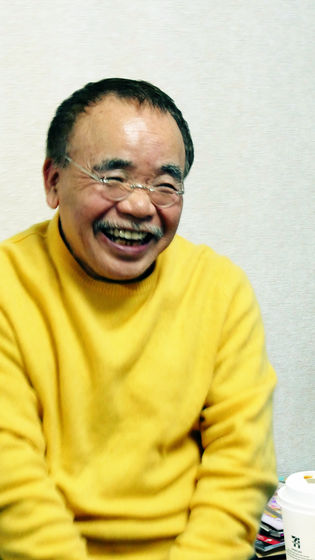
Naito:
Did you act as an assistant during the jump?
Muto:
I was an assistant for '
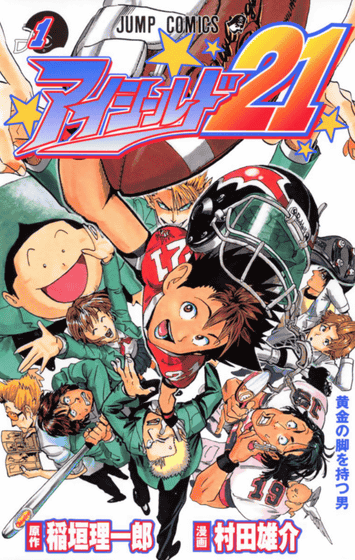
Naito:
Whoa, I didn't know that! I suddenly got a sense of who I was as a person! (smile)
Muto:
The editor in charge at that time was
Naito:
Eh, Asada-san, did you play Eyeshield?
Muto:
Yes, start up.
Naito:
Mr. Asada was the person in charge of the first generation of ' Blood Blockade Battlefront ,' and he pulled me into Jump SQ. At that time, I was in charge of Eyeshield.
G:
No, what a connection (laughs)
Muto:
Mr. Asada got promoted along with the launch of 'Jump SQ.'
G:
Why did you choose the short film?
Naito:
Is the short film live-action?
Muto:
No, it's animation. When I was a student, I belonged to a video seminar, and it was just the right time to get a job. Making music videos and putting out short films at festivals.
Naito:
Was it done commercially? amateur activity?
Muto:
How do you say it... In that world, the fences are vague (laughs)
(Everyone laughs)
Muto:
NHK has a lot of programs for children, but I was also doing the video.
G:
There are a lot of 'Minna no Uta'.
Muto:
Well, I was making cute animations mainly for children's programs (laughs)
G:
I did some research and found out that Mr. Muto's 'Cavity Express -Cavity Express- ' was selected by the Jury Committee of the 2009 Agency for Cultural Affairs Media Arts Festival.

Muto:
Yes, I applied for a subsidy from the Tokyo Metropolitan Government, and was given 20 million yen or 30 million yen. At the party venue related to that, I was connected to Mr. Maruyama.
G:
That's the connection.
Naito:
Amazing, Maruyama-san. Mr. Maruyama was the president when Madhouse first made 'Trigun' an animation, and from that time on, 'There was such a thing in that late-night anime episode, and I thought that director would be suitable for this work.' He's the kind of person who thought, 'Wow!' I was like, 'Why are you staring at me like that?'

Naito:
That alone is crazy, but when I called out to Mr. Muto at a short film party... I thought again, he's a scary person (laughs).
Muto:
Rather than being called out to me, I was making it with the budget of the Agency for Cultural Affairs, so there was a producer like that budget frame, and when I went around the party and said hello, one of them was Mr. Maruyama. It feels like it was.
G:
Oh, I see.
Naito:
That was the connection... This is a valuable interview...
G:
How did you come to create works with orange from there?
Muto:
After that, I was introduced to the current producer, Mr. Waki. I liked

Muto:
So, after Maruyama-san launched MAPPA, I worked with Waki-san to make a music video under Maruyama-san's production.
Naito:
Can you tell me what kind of MV it is?
Muto:
It's a T-ARA song. The song is 'TARGET'.
Naito:
Oh, that
Muto:
After that, what about the opening and ending of Hajime no Ippo Rising ? I was invited to work with Waki-san again.
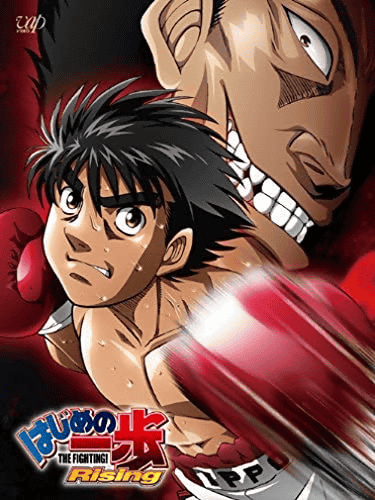
Naito:
Isn't it still orange then?
Muto:
It was MAPPA. I guess Mr. Maruyama thought, 'I can use it reasonably well' (laughs), and I was introduced to
Naito:
What exactly does it mean to be a production assistant?
Muto:
There was an extra edition called 'Postwar edition'. I was handed a notebook and said, 'Collect the artists yourself.' So I made a phone call and persuaded Mr. Animation for about two months.
Naito:
Isn't that the role of the production manager?
Muto:
At that time, the site was very difficult (laughs).
G:
Certainly, if you say so, it is true.
Muto:
So, Director Nishimura taught me how to read the sheet and how to instruct the layout, and while somehow doing it, the 23rd episode of the post-war part was told, ``Do it like Wolfwood!''
(Everyone laughs)
Muto:
Nekota is a character in the Osaka dialect, and his youthful design resembles that of Wolfwood. It was an episode where Nekota became a punch drunker. That was my acting debut.
Nicholas D. Wolfwood from TRIGUN STAMPEDE
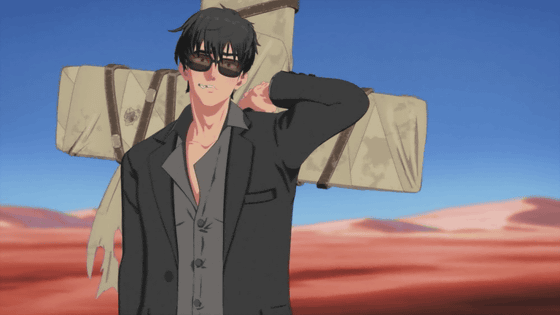
G:
History is amazing....
Muto:
Surprisingly dramatic. After that, I was given the opportunity to work on several of Mr. Maruyama's projects, and there was a time when Mr. Maruyama would resign as president of MAPPA when the projects were finished.
Naito:
M2 launch?
Muto:
When you start a new company called M2. Just at the stage of going to the next step, Mr. Waki goes to Orange from the studio map . I had a lot of worries about planning 'Houseki no Kuni' in full 3D, but I decided to transfer to Orange. So, it seems that the training period is a little over four years.
G:
Oh~, it's full of ups and downs (laughs)
Naito:
Did you meet Mr. Takei in 'Houseki no Kuni'? (*Mr. Katsuhiro Takei of Toho, who is the producer of this work)
Muto:
Mr. Waki and Mr. Takei are doing 'Houseki no Kuni', and I was able to do episodes 3, 6, and 10. Mr. Takei enjoys my rampage in various ways (laughs)
G:
go mad (laughs)
Muto:
I think that Waki is the same, but I feel that there are several types of producers. I think there's a type that appreciates people who listen to what they say, and a type that finds it amusing to be a destroyer.
G:
Director Muto was the latter?
Muto:
It may have been the latter (laughs). I was able to finish 'Land of the Lustrous' without incident, and after that, after doing storyboards for another project by Mr. Takei, I entered this project. It's a feeling.
G:
When did Director Muto hear about this 'TRIGUN STAMPEDE'?
Muto:
...about five years ago?
Naito:
I heard from the beginning that I wanted to go with Director Muto, and I think that was in 2018. At first, Director Muto wasn't there, so when there was a screening event for 'Blood Blockade Battlefront,' the four of us talked with Mr. Takei, Mr. Waki, and Mr. Okamura , who was the producer of 'Blood Blockade Battlefront.' I feel like At that time, he said, ``I'm thinking about Mr. Muto as the director, he has talent.''
G:
Oh, 'I have talent,' he said.
Naito:
Mr. Okamura also affirmed. So it's been about 5 years. It's so long. Surprise, isn't it?
G:
'Trigun' has been made into a TV anime and then a theatrical anime, so it's been a long time since I've come to this work. What was your impression when you first heard about this anime adaptation?
Naito:
It's too big for a bonus track.
(Everyone laughs)
Naito:
I feel like I've done enough with 'Trigun', and the next work, 'Blood Blockade Battlefront', was also made into such a high-quality anime, and it's the end roll of my life. In my mind, white letters were rising from the bottom to the top, and I thought, 'All that's left is to spend the rest of my life.' Suddenly, it went dark, and a black man with an eyepatch was waiting in the corner of the room. When I was asked, 'Do you want to join SHIELD?', I said, 'Yes.' It felt like something was suddenly inserted, and I was like, 'Eh... what...?'
(Everyone laughs)
Naito:
I was told, 'I'd like to do a reboot project,' and it was kind of a big deal. That's really my impression. That's how I felt without hiding it. At that time, I said, 'Well, it's a challenge.' I was asked, 'Are you okay with CG animation?' Once we said, 'I'm going to do it,' we started working on building up the pre-production without deciding at all what pace and when to do it. Talking with the director, starting with 'What kind of story is Trigun?'
G:
Oh…….
Naito:
'Are you okay?' To tell the truth, I thought that there was about a half chance that this project would fail. There's no way I can continue to do something that doesn't lead to such a result. It was such a big story that I couldn't see the future.
G:
The first visual that was announced was a picture of Vash looking down on the crashed ship, but that was one of the things that were piled up from the beginning.
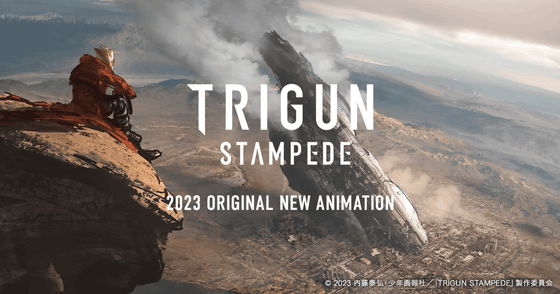
Naito:
that's right. At first, every time I met with the director, Takei-san, and Waki-san, there was a lot of that kind of thing in the clear file. Concept art including characters that don't appear on the surface, science fiction settings, and things like that from people who are doing it at the Hollywood level have arrived, and the character settings are also tightly packed... I wanted to delve into the setting, so I did it for a year or two, so I thought, 'Where is the money coming from!?'
G:
Once again, how did you feel when you saw the art for the new Trigun?
Naito:
Anyway, the amount of effort put into it is a little different. It's hard to say, but I've been involved in various projects in the past, but the most unusual amount of handwork is included every time. Settings and stories that are explored and reconstructed with great enthusiasm. At least, it was the amount that there is no other anime that I have brought
G:
Harsh!
Naito:
The backing was really big. The fact that the film has come to fruition through that experience is a strong source of trust for me. I think this is fine.
G:
Director Muto, why did you build up so much?
Muto:
...why?
Naito:
The director entered from 'What is Trigun?'
Muto:
Well... it may lead to the story of the producer's taste, but I think that it can be done with technique to make it look like it on the surface. But for this work, I was thinking backwards from around the final volume of the original manga. I don't know.
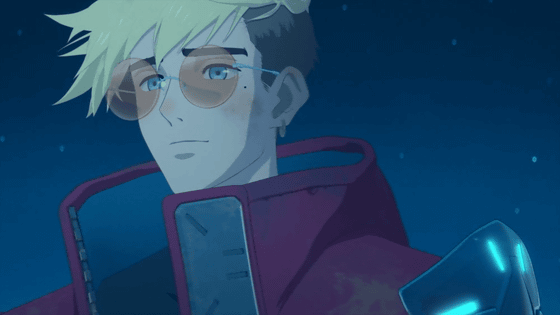
Naito:
It's difficult, isn't it...
Muto:
I'm really struggling to do it. The ideology is quite different from the other characters, so it's like a character I've never seen before. The principle of action is that Mr. Naito draws naturally.
Naito:
It's not difficult for me. For me, the answer I came up with after suffering was the first original, so even if I was told 'that's not true', I would say 'I don't know', but if a third party draws it, I don't think it would be that difficult. It's very difficult to know how to get it right. We talked about various things to challenge there, and as part of it, we also filled in the outer moat.
Muto:
First of all, I can't draw without understanding Mr. Naito. So, what Mr. Naito was thinking, what kind of thinking he was facing with Vash at that time, and tracing Mr. Naito once from that point ... I was working hard on that kind of dismantling work. Knives or Wolfwood, how easy it would have been if that was the main character...
(Everyone laughs)
Muto:
I also cried to P many times and said, 'Can you make me the main character?'
Naito:
I really do support Knives (laughs)
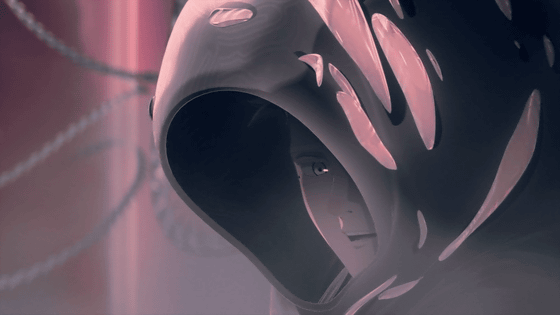
Muto:
After all, I wonder if it's something like the theory of goodness or evil. While I think Naito-sensei is someone who believes in good nature, I also feel that I'm more twisted...Vash is very difficult. I remember feeling relieved when I heard the voice actor
Naito:
You listened to it during the audition, but when you actually voiced it, did you get a strong 'OK'?
Muto:
I think it came out. It made it so much easier to draw.
Naito:
Well, isn't that a crazy story?
Muto:
What do you think? It's not just the voice actors who act, but it's the same for all animators and directors, but people who ask good questions are very helpful. I can organize myself, and while properly verbalizing it, I can improve the quality of my acting.
Naito:
That was the first post-recording.
Muto:
I really thought. 'Oh, is this what it is?'
G:
There is such a thing ......
Naito:
It means that there was enough persuasive power and persuasive power.
Muto:
that's right. Something inside me may have expanded more than Mr. Matsuoka thought himself.
G:
I would like to ask Mr. Naito again. Along with the release of ' S.Flight Yasuhiro Naito Works ', an interview was published in Comic Natalie.
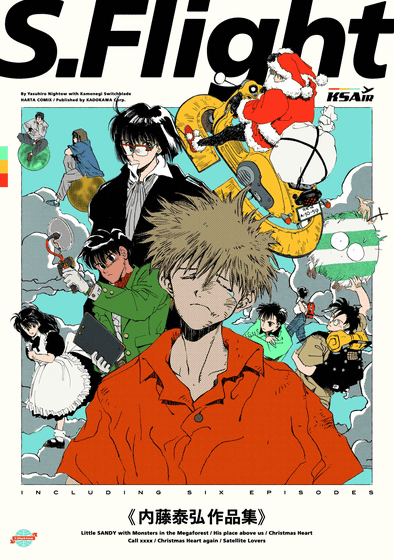
G:
Among them, there is an episode that you participated in the spot sale for the first time in 'Sandy and the Lost Forest Friends' , but is it true that you printed 500 copies in your first participation?
Naito:
It's true.
G:
I think 500 copies is quite a lot for the first time, but was there any reason why you thought '500 copies can be done'?
Naito:
Eh... that's what I thought. I wondered if they would buy it (laughs).
G:
How old was the episode?
Naito:
I'm about 20 years old. Thinking about it now, I don't think it's that abnormal behavior (laughs)
G:
You said that the 100 copies you brought to the first event were sold out. Did you spend the entire day at the event slowly?
Naito:
It took me a day. I wonder if there was an hour left.
G:
It continued to sell constantly.
Naito:
That's right. 100 copies is just right for having people pick it up and read it while talking to them and say, 'Okay, please give me this,' and 'Thank you.' It was a number that could be sold in a very human way.
G:
Mr. Naito's father said, 'How can your manga sell so much!'
Naito:
I guess you didn't report it. ``It's not particularly good, it's not particularly doya'' (laughs) I wasn't affirmed that I would become a manga artist or draw manga, so I didn't want to be recognized for that. without
G:
The next question is completely separate from the work, but Mr. Naito has been doing Twitter for a long time, and among them, in the form of replying to Mr. Takashi Shiina 's tweet, Mr. Kota Hirano and Mr. Rokudojin There was a tweet about going to a cosplay cabaret club with Mr. Tsukasa , and I remember thinking that it was an amazing episode. How did this assault episode come about? Why are you all going?
@Takashi_Shiina Once upon a time, when Hirako, Rokudo-san and the others attacked a cosplay cabaret club in Kanda, they said they were drawing comics for pirates, ninjas, and god of death, and they dismissed me with a half-smile.
— Yasuhiro Naito/YasuhiroNightow (@nightow) December 30, 2014
Naito:
(Laughs) Somehow, there was a story about a cosplay cabaret club that seemed interesting, so I wonder if Mr. Fudetani , the editor-in-chief, took me there... No, it's not. Another friend was dating and heard that her sister was working, so I decided to go check it out. So, as I tweeted, the story was half-smiled and passed through. But Hirako was so excited to talk about it, and when I asked her why, she said, 'She's a girl who really likes Natsuho Dun !!' It's not a sexy story at all (laughs)
G:
(smile)
Naito:
After leaving, I feel like I went to another cosplay cabaret club. But I haven't been there since. It was fun, but not addictive.
G:
I see. When I read various interviews that Mr. Naito has received so far, I found that Mr. Naito answered most questions sincerely, but there were times when he was vague about his work. hand. In September 2017, she tweeted, 'I used to fantasize about myself when I got into a different job, but recently I've been thinking about my old age.' , Is this feeling that it is quite tight when the work is cornered?
I used to fantasize about myself getting a different job when I was stuck at work, but recently I've been thinking about my old age.
— Yasuhiro Naito / YasuhiroNightow (@nightow) September 3, 2017
Naito:
That's right... it's dangerous. Depending on the season, recently I've learned how to control myself, but in the past I used to roll around, hold my head and scream. But don't you hate hearing that kind of talk too much? I think that's why I avoided answering.
G:
I'm the type that feels a lot of pain.
Naito:
Well, it's pretty painful. There were many times when I thought I would not be able to continue working.
G:
When the topic of work came up in a conversation with Sora Kawasaki, he was asked, 'Is there anything I should be aware of when someone who came here as a hobby becomes a professional?' In addition to talent, abilities are also required.' As for the necessary abilities, 'Are you cooperative enough to work with others, can you communicate well, can you keep deadlines? Is there a technique to manage my physical condition normally, or is there a technique to keep my mental state calm before I break down by releasing stress?”
Naito:
What I am talking about in this interview is more basic. I still think that it is difficult for people who specialize only in 'just being good' and who are like Karakishi to do a good job unless they team up with someone who can strongly manage them. I'm here. This is exactly what it means. It's a different story that I'm cornered just before the deadline, and it's a strange area where I'm crushed like a self-intoxication by the quality that the work demands.
G:
I've asked various people, but is there anything you keep in mind in order to meet the deadline, or are there any techniques you use?
Naito:
No... because there were many times when it wasn't good. I don't think it's been fully controlled yet. I have no choice but to do my best.
G:
Director Muto, what do you think about the technique of meeting deadlines?
Muto:
I'm also a dangerous person with deadlines, so I can't say much about people...
(Everyone laughs)
Muto:
However, as Mr. Naito said earlier, there is an overwhelming limit to what one person can do, so please bring in the producers, staff, and production team to manage it, in this case Mr. Tajima. Including things like that, it's a collaborative work, a teamwork... I always have the thought, ``In the end, my strength,'' somewhere, and I have to do my best, even though I'm weak.
Naito:
Isn't there a lot more room to assign work to people in the anime industry than in manga?
Muto:
However, I also feel that it becomes 'thin' because of that. I can shake it, but I wonder if it's okay to shake it.
Naito:
In the worst case, I feel that the scene has the potential to say, 'Even if this person disappears at this moment, the cut will go up, quality aside.'
Muto:
But... I wonder if that's okay.
Naito:
There is a battle of 'to some extent for quality assurance'.
Muto:
It's facial expressions, even if you take one play. 'I don't think it's wrong, but...' I'm sorry, I'm a little off topic, but recently I've noticed a lot that my work somehow manages to get out into the world thanks to the support of many people. I feel that it will lead to the awareness that deadlines must be met.
G:
I see. Now that you've played 'TRIGUN STAMPEDE', do you have any thoughts on things like things that went well, or things that were in a pinch?
Muto:
Basically, everything is in a pinch. The catchphrase is 'everything is a pinch' (laughs)
G:
Everything is in a pinch (laughs)
Muto:
The topic of 'Land of the Lustrous' came up earlier, but fortunately, the main staff who were in charge of the number of stories in 'Land of the Lustrous' and supported me, and my long-standing friends are gathered. Toho's producers, Waki producers, music producers, chief designers, chief animators, including those who were temporarily at other companies, have returned. That's really hot.
Naito:
It's 'Muto group'. That would improve the quality and make it easier.
Muto:
I can trust you.
G:
I see. And Mr. Naito, how did you feel when you saw 'Trigun' in action for the first time in a while?
Naito:
This is, I think, 'very Trigun'.
G:
Ah, 'Very Trigun.'
Naito:
For me, it all started with Mr. Tajima's art. After condensing and condensing, the film that appeared before my eyes was 'Very Trigun'. That's what I thought the most. How was your visit?
G:
Yes, I'm pretty sure it's a Trigun. Thank you for showing me such a tremendous scene.
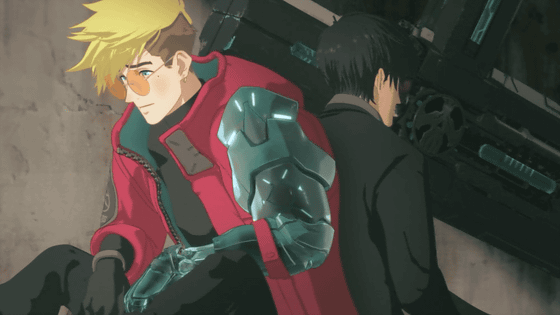
Naito:
This boosted, refined, concentrated, and unreduced Trigun feeling. I'm really looking forward to seeing if this texture will last until the end or if it will evolve further...!!
G:
Right now, the director is next to me...
Muto:
I'm sweating a lot (laughs).
G:
(Laughs) Thank you very much for your time today.
The TV anime 'TRIGUN STAMPEDE' is being aired every Saturday from 23:00 on 6 TV Tokyo affiliated networks and others. In addition, the Blu-ray first production limited edition of 'TRIGUN STAMPEDE Vol.1' will be released on April 19, 2023, and reservations are being accepted.

TV animation 'TRIGUN STAMPEDE' PV 3rd / #TRIGUN - YouTube
◆ 'TRIGUN STAMPEDE' work information
·staff
Original: Yasuhiro Naito (Published by Shonen Gahosha, Young King Comics)
Director: Kenji Mutoh
Story draft: Oshitakehiko
Composition/Screenplay: Tatsuro Inamoto, Shin Okajima, Yoshihisa Ueda
Concept art character draft: Koji Tajima
Chief Designer: Nao Otsu
Character design: Takumi Watanabe, Tetsuro Moronuki, Takahiko Abiru, Akiko Sato, Takeshi Ninomiya, Yumihiko Amano
Mechanical Prop Design: Fumihiro Katakai, Takemitsu Hasegawa
Set design: Chiyuki Aoki, Tomoyasu Fujise, Toshiyuki Sakaki, Asato Kamijo
Creature Design: Eiji Yamamori
Special effects designer: Kiyotaka Oshiyama
CG Chief Director: Eiji Inomoto
VFX Art Director: Kensuke Yamamoto, Daishi Hayakawa
Color design: Ken Hashimoto
Art Director: Yuji Kaneko
Screen design: Hiroshi Saito
Director of Photography: Takashi Aoki, Ryuta Koshida
Editing: Daisuke Imai
Re-recording Mixer: Takahiro Fujishima
Sound Editor: Masatoshi Katsumata
Music: Tatsuya Kato
Producer: Katsuhiro Takei
Production Supervisor/Production Producer: Sumiyoshi Waki
Production: Orange
Opening theme song: Kvi Baba 'TOMBI'
Ending theme song: Salyu × haruka Nakamura 'Hoshi no Kuzu α'
·cast
Vash the Stampede: Yoshitsugu Matsuoka
Meryl Strife: Ando Sakura
Roberto De Niro: Kenji Matsuda
Nicholas D. Wolfwood: Yoshimasa Hosoya
Millions Knives: Junya Ikeda
William Conrad: Ryuusei Nakao
Legato Bluesummers: Kouki Uchiyama
Zazie the Beast: TARAKO
Vash the Stampede (childhood): Tomoyo Kurosawa
Millions Knives (childhood): Yumiri Hanamori
Rem Sablem: Maaya Sakamoto
・Broadcast information
TV Tokyo 6 stations net: Every Saturday from 23:00
AT-X: Every Monday from 22:00 (with repeat broadcast)
TV Wakayama: Every Monday from 17:00
・Distribution information
Every Saturday from 23:30, it is being distributed sequentially on various distribution platforms
ABEMA Premium, Amazon Prime Video, DMM TV, d Anime Store, d Anime Store Nico Nico Branch, d Anime Store for Prime Video, FOD, Hulu, J:COM On Demand, milplus, Paravi, TELASA, TELASA (au Smart Pass Premium)・U-NEXT ・All-you-can-eat anime ・Bandai Channel, etc.
Official site: https://trigun-anime.com/
Official Twitter: @trigun_anime
Official TikTok: https://tiktok.com/@trigun_anime
© 2023 内藤泰弘・少年画報社/「TRIGUN STAMPEDE」製作委員会
Related Posts:







